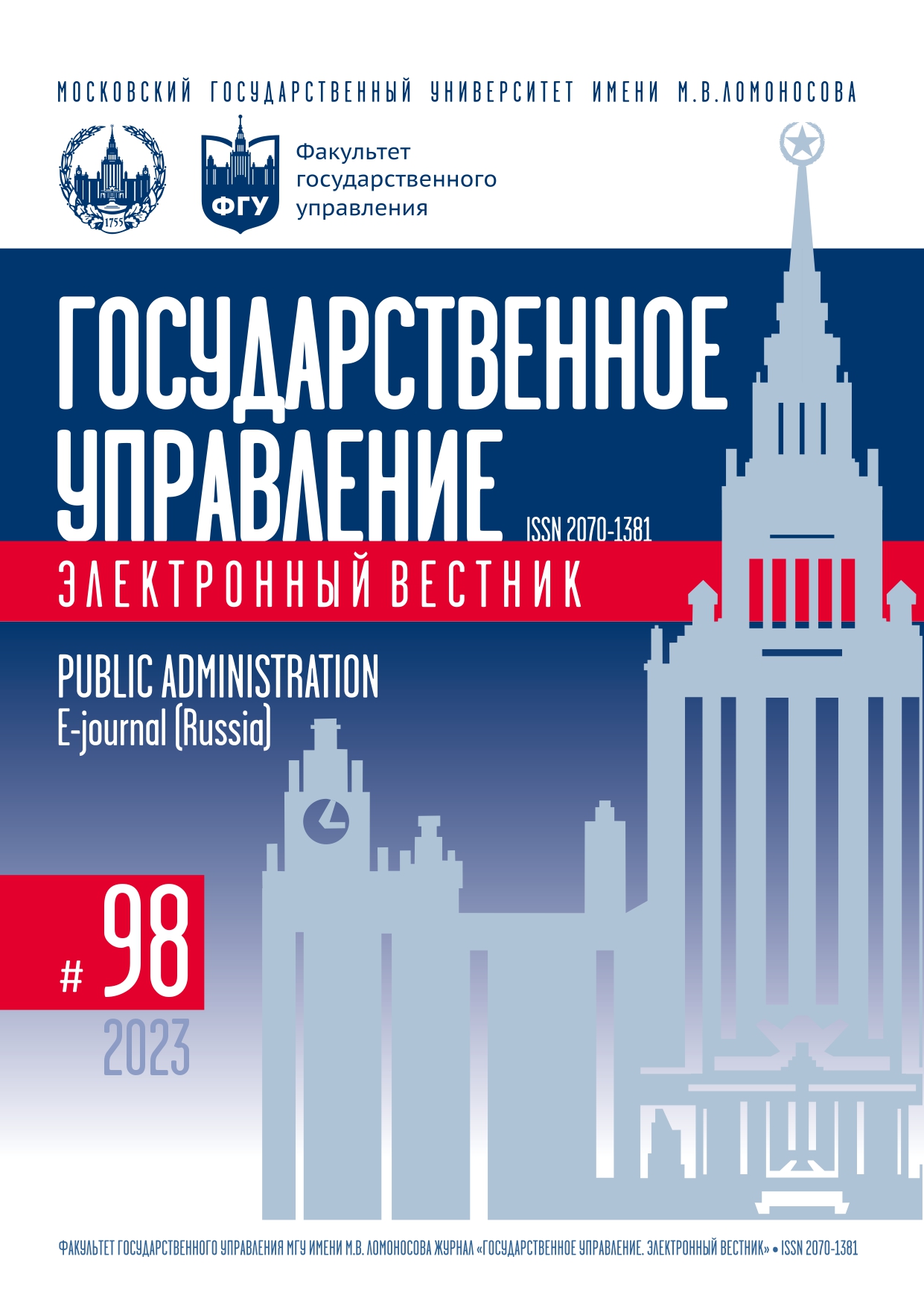Организационная амбидекстрия: концептуальные основы и современные подходы
Keywords:
Organizational ambidexterity, strategic management, exploration and exploitation, innovation, structural ambidexterity, sequential ambidexterity, contextual ambidexterity, interorganizational ambidexterityAbstract
The article analyses transformation of research practices and approaches to understanding organizational ambidexterity,
the essence of which is the search for a balance between the exploration (development of radical innovations) and exploitation
(development of incremental innovations). The article traces a change in the approach to understanding organizational
ambidexterity: from recognizing the irreconcilability of the conflict between exploration and exploitation and, as a result, the need
to breed these types of activities in time and space, to the modern strategic perception of incremental and radical innovations
from the standpoint of mutual complementation and reinforcement. The author conducted a detailed analysis of sequential,
structural, contextual and interorganizational ambidexterity, highlighted their strengths and limitations. Sequential ambidexterity
involves the alternation in time of exploration periods and exploitation periods. Structural ambidexterity consists of structural
isolation of exploration and exploitation by creating autonomous units. Contextual ambidexterity involves resolving contradictions
between exploration and exploitation at the individual level, and the creation of an optimal organizational environment plays an
important role here — the social context and the performance management context. Interorganizational ambidexterity involves
combining the efforts of different organizations to carry out exploration and exploitation (mergers and acquisitions, alliances).
The article also reveals inefficient practices that lead to a decrease in company performance in the implementation of organizational
ambidexterity. As a result, the conclusion is made that there is the need for further study of the methods and mechanisms
for the practical implementation of organizational ambidexterity, in particular the transition between exploration and exploitation
within the framework of sequential ambidexterity, mechanisms for finding the optimal ratio of incremental and radical innovations
depending on environmental conditions, as well as the creation of specific tools for evaluating the effectiveness and the prospects
of this or that type of ambidexterity for the company, taking into account its impact on the key stakeholders of the organization.
References
Буренина В.И., Митрофанова Я.С. Применение гибридного подхода в управлении проектами создания и развития смарт-университета // Технологии разработки и отладки сложных технических систем. VII Всероссийская научно-практическая конференция: сборник трудов (Москва, 01–02 апреля 2020 г.). М.: МГТУ им. Н.Э. Баумана, 2020. С. 50–55.
Плотников А.В. Концептуальная модель организационной гибкости // Креативная экономика. 2021. Т. 15. № 12. С. 4851–4862.
DOI: 10.18334/ce.15.12.113931
Титов С.А., Титова Н.В. Гибридные методологии управления проектами как проявление организационной амбидекстрии // Управленческие науки. 2022. Т. 12. № 2. С. 55–67. DOI: 10.26794/2304-022X-2022-12-2-55-67
Чаплина А.Н., Максименко И.А. Новая управленческая парадигма обеспечения баланса между исследованиями и эксплуатацией в целях достижения конкурентной устойчивости // Проблемы современной экономики. 2021. № 2(78). С. 64–68.
Чаплыгин В.Г., Каранина Е.В., Мороз В.Н. Влияние трансфера технологий на реализацию инновационных проектов в инновационно-промышленном кластере (на примере АО «Объединенная судостроительная корпорация») // Морские интеллектуальные технологии. 2021. № 2–1. С. 160–167. DOI: 10.37220/MIT.2021.52.2.023
Чурсин А.А., Юдин А.В., Грошева П.Ю., Мыслякова Ю.Г., Неклюдова Н.П. Оценка предрасположенности территорий к размещению «умных» компаний // Экономические и социальные перемены: факты, тенденции, прогноз. 2021. Т. 14. № 3. С. 99–117. DOI: 10.15838/esc.2021.3.75.6
Choi S., McNamara G. Repeating A Familiar Pattern in a New Way: The Effect of Exploitation and Exploration on Knowledge Leverage Behaviors in Technology Acquisitions // Strategic Management Journal. 2018. Vol. 39. Is. 2. Р. 356–358. DOI: 10.1002/smj.2677
Greve H.R. Learning Theory: The Pandemic Research Challenge // Journal of Management Studies. 2020. Vol. 57. Is. 8. Р. 1759–1762.
DOI: 10.1111/joms.12631
March J.G. Exploration and Exploitation in Organizational Learning // Organization Science, 1991. Vol. 2. Is. 1. Р. 71–87.
Mavroudi E., Kesidou E., Pandza K. Shifting Back and Forth: How Does the Temporal Cycling between Exploratory and Exploitative R&D Influence Firm Performance? // Journal of Business Research. 2020. Vol. 110. Р. 386–396. DOI: 10.1016/j.jbusres.2020.01.056
Nowacki C., Monk A. Ambidexterity in Government: The Influence of Different Types of Legitimacy on Innovation // Research Policy. 2020. Vol. 49. Is. 1. DOI: 10.1016/j.respol.2019.103840
O’Reilly C.A, Tushman M. Organizational Ambidexterity: Past, Present, and Future // Academy of Management Perspectives. 2013. Vol. 27. Is. 4. Р. 324–338.
Stettner U., Lavie D. Ambidexterity under Scrutiny: Exploration and Exploitation via Internal Organization, Alliances, and Acquisitions // Strategic Management Journal. 2014. Vol. 35. Is. 13. Р. 1903–1929. DOI: 10.1002/smj.2195
Strategic Management: State of the Field and Its Future / ed. by I.M. Duhaime, M.A. Hitt, M.A. Lyles. Oxford: Oxford University Press, 2021.
Swift T. The Perilous Leap Between Exploration and Exploitation // Strategic Management Journal. 2016. Vol. 37. Is. 8. Р. 1688–1698.
DOI: 10.1002/smj.2423
Úbeda-García M., Claver-Cortés E., Marco-Lajara B., Zaragoza-Sáez P. Toward a Dynamic Construction of Organizational Ambidexterity: Exploring the Synergies between Structural Differentiation, Organizational Context, and Interorganizational Relations // Journal of Business Research. 2020. Vol. 112. Р. 363–372. DOI: 10.1016/j.jbusres.2019.10.051
Wilden R., Hohberger J., Devinney T.M., Lavie D. Revisiting James March (1991): Whither Exploration and Exploitation? // Strategic Organization. 2018. Vol. 16. Is. 3. Р. 352–369. DOI: 10.1177/14761270187650

